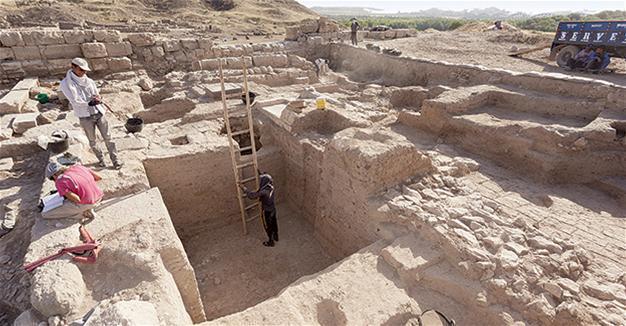Excavation works in ancient Karkamış end
GAZİANTEP
 A Turkish-Italian team has completed the first part of their seven-season-long excavation works in an ancient site in the town of Karkamış, located in the province of Gaziantep on the Turkish-Syrian border, state-run Anadolu Agency reported on July 14.
A Turkish-Italian team has completed the first part of their seven-season-long excavation works in an ancient site in the town of Karkamış, located in the province of Gaziantep on the Turkish-Syrian border, state-run Anadolu Agency reported on July 14. The works at the site, which dates back to the Hittite Empire in 2,000 B.C., have been undertaken under the leadership of Nicolo Marchetti, a professor at Bologna University, and with the support of the Turkish and Italian governments, the Gaziantep Metropolitan University and SANKO Holding.
Marchetti said the excavations, which started on May 2 this season, were executed by a team comprised of 25 experts with a special focus on the place site and the tumulus site, adding that the whole area was taken under protection until September, when the excavation works would be resumed.
The Karkamış Ancient City Archaeological Park will open after a seven-year excavation period on May 12, 2018, Turkish Culture and Tourism Minister Nabi Avcı announced earlier in July.
“New walking routes were made in parallel to the city’s ancient roads to prepare the site’s opening. A number of cafes and rest areas will also be built. Tourists will find the opportunity to visit the remnants of the ancient palace and temple, an old excavation house, a street paved with Roman columns, several statues and walls decorated with eagle-headed gryphon reliefs. They will also enjoy a magnificent natural landscape by the side of the Euphrates River,” Marchetti said.
Despite Syria’s civil war, archaeologists on the Turkish side of border-straddling Karkamış unearthed sculptures, mosaics and other artifacts in relative safety.
Such are the modern fortunes of Karkamış, which dates back thousands of years and was excavated before World War I by British archaeologists including T.E. Lawrence, later known as Lawrence of Arabia, as reported in a feature by the Associated Press in 2016.
A century later, the area was demined and the Turkish-Italian team started work at the site controlled by the Turkish military.
Among their finds were sculptures in the palace of King Katuwa, who ruled the area around 900 B.C. There were five large orthostats in limestone and basalt, a dark grey to black rock, that portray rows of individuals bearing gifts of gazelle. An orthostate is an upright stone or slab that forms part of a structure.
The archaeologists also found a mosaic floor in the palace of Sargon II, who reigned around 700 B.C. over Assyria, an ancient empire mostly located in Mesopotamia. The team finished exploration of the ruins of the expedition house of Lawrence of Arabia, who worked in Karkamış between 1911 and 1914.
















